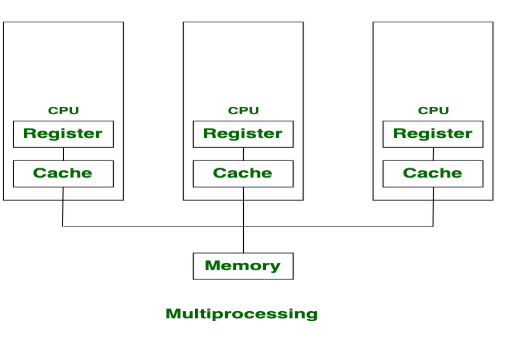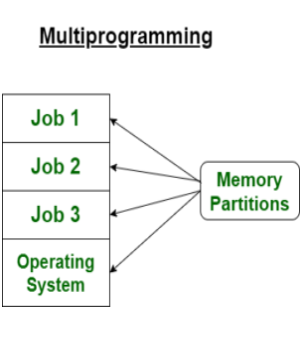1.多重处理:
多处理是具有两个或多个处理器的系统。为此,添加了CPU以提高系统的计算速度。由于进行了多处理,因此有许多进程可以同时执行。多重处理又分为两类:对称多重处理,非对称多重处理。

2.多重编程:
多重编程是一次运行的多个进程,它通过组织作业(代码和数据)来提高CPU利用率,从而使CPU始终有一个要执行的进程。目的是在主存储器中保留多个作业。如果一个作业被输入/输出占用,则可以将CPU分配给其他作业。

多重处理和多重编程之间的区别:
| S.No. | Multiprocessing | Multiprogramming |
|---|---|---|
| 1. | The availability of more than one processor per system, that can execute several set of instructions in parallel is known as multiprocessing. | The concurrent application of more than one program in the main memory is known as multiprogramming. |
| 2. | The number of CPU is more than one. | The number of CPU is one. |
| 3. | It takes less time for job processing. | It takes more time to process the jobs. |
| 4. | In this, more than one process can be executed at a time. | In this, one process can be executed at a time. |
| 5. | It is economical. | It is economical. |
| 6. | The number of users is can be one or more than one. | The number of users is one at a time. |
| 7. | Throughput is maximum. | Throughput is less. |
| 8. | Its efficiency is maximum. | Its efficiency is Less. |